
Gate City is a town in Scott County, Virginia, United States. The population was 2,034 at the 2010 census. It is the seat of Scott County.

The Scottsburg Courthouse Square Historic District is a national historic district located at Scottsburg, Scott County, Indiana. The district encompasses 48 contributing buildings and 8 contributing objects in the central business district of Scottsburg centered on the Scott County Courthouse. It developed between about 1873 and 1952, and includes notable examples of Italianate, Romanesque Revival, Gothic Revival, and Stick Style / Eastlake movement style architecture. The courthouse was built in 1873-1874 after the decision was made to finally locate the county seat of Scott County into a central location within the county, which caused the founding of Scottsburg. Located in the district is the separately listed Scottsburg Depot. Other notable contributing resources include the Town Tavern (1924), A&P Grocery (1923), Corner Drugstore, Harmon Building (1907), City Hall (1899-1900), Napper's Hospital (1936), Scott Theatre (1946), Scott County Public (Carnegie) Library (1919), Scott County Bank (1906), Prosser's Hardware (1912), and a statue of William Hayden English (1908).
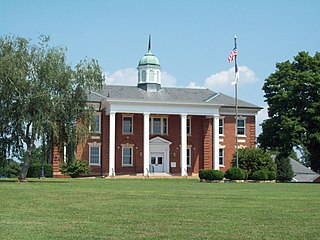
Presbyterian Orphans Home, now known as Presbyterian Homes & Family Services, is a historic "cottage style" orphanage complex located at Lynchburg, Virginia. It consists of six residence halls, a superintendent's house, and an executive building, all constructed of brick in the Georgian Revival style. Also on the property is a Greek Revival style gymnasium. Other contributing buildings and structures include the maintenance building, swimming pool, two farmhouses, dairy barn, stable, barn, and entry gates. A contributing site is the campus circle.

Onancock Historic District is a national historic district located at Onancock, Accomack County, Virginia. The district encompasses 267 contributing buildings, 2 contributing sites, and 2 contributing objects. It includes most of the historic residential, commercial, and ecclesiastical buildings in the town of Onancock. The buildings represent a variety of popular architectural styles including the Late Victorian, Greek Revival, and Federal styles. Notable buildings include Scott Hall, Alicia Hopkins House (1830), Harmon House, Holly House (1860), Ingleside (1880s), Dr. Lewis Harmanson House (1899), Harbor Breeze (1912), First National Bank, Roseland Theatre, Market Street Methodist Church (1882), Naomi Makemie Presbyterian Church (1895), the Charles E. Cassell designed Holy Trinity Episcopal Church (1882), Onancock Town Hall, Onancock High School (1921), and Onancock Post Office (1936). Located in the district and separately listed are the Cokesbury Church, Hopkins and Brother Store and Ker Place.

Clifton Forge Commercial Historic District is a national historic district located at Clifton Forge, Alleghany County, Virginia. The district encompasses 77 contributing buildings in the central business district of Clifton Forge. It primarily includes frame, brick, and concrete block commercial buildings dating to the late-19th and early-20th centuries. The buildings are in a variety of popular architectural styles including Classical Revival, Mission/Spanish Revival, and Italianate. Notable buildings include the Hawkins Brothers Store, Wiley House (1891), Chesapeake and Ohio Office Building (1906), Masonic Theatre (1905), Alleghany Building (1905), Clifton Forge City Hall (1910-1911), U.S. Post Office (1910), Ridge Theatre (1929), the Farrar Building (1930), and the Pure Oil Company Service Station (1932).

The Glencarlyn Historic District is a national historic district located in the Glencarlyn neighborhood of Arlington County, Virginia. It contains 276 contributing buildings, two contributing sites, one contributing structure, and one contributing object in a residential neighborhood in South Arlington. The area was platted in 1887 as Carlin Springs and continued to develop throughout the 20th century as a residential subdivision. The dwelling styles include a variety of architectural styles, ranging from Craftsman-style bungalows, Colonial Revival–style, and Queen Anne style dwellings. Notable buildings and sites include the Carlin Family Cemetery, Glencarlyn Library, and St. John's Episcopal Church. Also located in the district are the separately listed Ball-Sellers House and Carlin Hall.

Waveland is a historic plantation house and farm located near Marshall, Fauquier County, Virginia in the Carter's Run Rural Historic District. It was individually listed on the National Register of Historic Places in 2004, and the surrounding district listed in 2014.

Burrland Farm Historic District is a historic home and farm complex and national historic district located near Middleburg, Fauquier County, Virginia. The district encompasses 22 contributing buildings, 2 contributing sites, 14 contributing structures, and 1 contributing object on a 458-acre thoroughbred horse breeding and training farm. The buildings were built between 1927 and 1932, and include a Georgian Revival style training barn, a polo barn, a stallion barn, two broodmare barns, a yearling barn, a field shed, an equipment shed, a farm manager's house / office, a trainer's cottage, a mess hall quarters, a foreman's dwelling, three mash houses, five garages, a pumphouse, and a feed and storage warehouse. The contributing structures include a silo, a springhouse, three loading chutes, two teasing chutes, two rings, three run-in sheds, one sun hut and an entrance gate. The original Burrland house was built in 1879 and expanded in 1927 for William Ziegler Jr. by architect William Lawrence Bottomley. Ziegler sold the property in 1955 to Eleonora Sears, who "deliberately gutted and burned [the mansion] down" in 1961. She then sold the farm in 1966.

Rocky Mount Historic District is a national historic district located at Rocky Mount, Franklin County, Virginia. It encompasses 211 contributing buildings, 2 contributing sites, 1 contributing site, and 2 contributing objects in the central business district and surround residential areas of Rocky Mount, county seat of Franklin County. It includes residential, commercial, institutional, and governmental buildings dated from the early- to mid-19th through early 20th centuries. Notable buildings include the Rakes Building (1929), N&W Freight Depot, Mount Pleasant (1828–1829), The Taliaffero Building (1827–1828), The Grove (1850), McCall House, Lodge Rooms (Colored), Trinity Episcopal Church, Rocky Mount Presbyterian Church, Baptist Church (Colored), N. Morris Department Store / Bryd Balm Company, Franklin County Courthouse (1909), Franklin County Jail (1938), Franklin County Library (1940), Rocky Mount Municipal Building (1929), and a Lustron house known as the Davis House (1949). Located in the district and separately listed are the Woods-Meade House and the Greer House.

MacCallum More and Hudgins House Historic District is a pair of historic homes and national historic district located at Chase City, Mecklenburg County, Virginia. The district encompasses three contributing buildings and one contributing site They include the Hudqins-Rutledqe House built in 1910. The house is a two-story, frame dwelling with a symmetrical two-bay façade that combines Colonial Revival and Neoclassical elements. MacCallum More was designed by noted Richmond architect Carl M. Lindner and built in 1929. It is Colonial Revival in style with a three-bay, symmetrical façade and a side gable roof. It has a two-story central block flanked by one-story wings. Associated with it is a 1+1⁄2-story, Guest Cottage built about 1941. The houses are located in landscaped gardens designed by Charles Gillette in 1927.
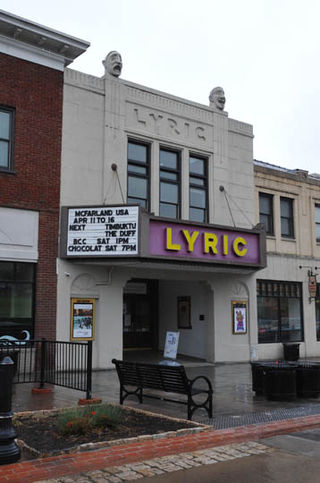
Blacksburg Historic District is a national historic district located at Blacksburg, Montgomery County, Virginia. The district encompasses 137 contributing buildings and 2 contributing sites in the central business district and surrounding residential areas of the town of Blacksburg. The district includes commercial, residential, and institutional buildings in a variety of popular architectural styles including Greek Revival, Gothic Revival, and Colonial Revival. Notable buildings include the Johnson House, Blacksburg Presbyterian Church #1 (1847), Smith-Montgomery House, Croy House, Spout Spring House, Deyerle's Store (1875-1877), W. B. Conway Building, Presbyterian manse (1907), Sheriff Camper House, Christ Episcopal Church, African Methodist Episcopal Church of Blacksburg, Blacksburg Presbyterian Church (1904), Blacksburg Methodist Church (1910), St. Mary's Catholic Church, Hunter's Lodge Masonic Building (1928), Martin-Logan Store, Lyric Theater (1922), and Ellett's Drug Store (1900).

Gordonsville Historic District is a national historic district located at Gordonsville, Orange County, Virginia. It encompasses 85 contributing buildings and 2 contributing structures in the town of Gordonsville. They include 19th- and early 20th-century residential, commercial and institutional buildings in a variety of popular architectural styles including Colonial Revival, Greek Revival, and Georgian Revival styles. Notable buildings include the E.J. Faulconer House, Faulconer-Schlosser House (1868), Linney-Barbour Building (1870), Swan-Payne House (1901), Magnolia House, Gordonsville Christian Church, Gordonsville Presbyterian Church (1855), Gordonsville Methodist Church (1873), St. Mark's Catholic, Christ Episcopal Church, Grammar School (1877-1878), Memorial Hall, Sneed's Store, Allman Building, Gordonsville Motor Car Company Building, The Old Oaken Bucket, and the Blakey Building (1916). Located in the district is the separately listed Exchange Hotel.

Albemarle County Courthouse Historic District is a historic courthouse and national historic district located at Charlottesville, Virginia. The district encompasses 22 contributing buildings and 1 contributing object centered on Court Square. The original section of the courthouse was built in 1803 in the Federal style and is now the north wing. The courthouse is a two-story, five-bay, T-shaped brick building with a Greek Revival style portico. Other notable buildings include the Levy Opera House, Number Nothing, Redland Club, and Eagle Tavern.

Centreville–Fentress Historic District is a national historic district located at Chesapeake, Virginia. The district encompasses 24 contributing buildings and 10 contributing structures in a rural farming community that developed a small commercial core. It was developed starting in the 1880s, with the addition of the Norfolk and Elizabeth City Railroad link to the Albemarle and Chesapeake Canal. Notable resources include the Fentress House, Colonial Revival style Centerville Baptist Church (1925), New Burfoot House (1925), Queen Anne style George Jackson House (1890), the Norfolk and Elizabeth City, NC Railroad Tracks, and a 1920 commercial building.

The Downtown Danville Historic District is a national historic district located at Danville, Virginia. The district includes 48 contributing buildings in the central business district of Danville. It includes a wide range of commercial, industrial, and institutional building types dating from the 1870s to the present. The district includes notable examples of the Late Gothic Revival, Tudor Revival, and Romanesque Revival styles. Notable buildings include the Danville City Auditorium (1932), Morotock Manufacturing Company (1907), J. T. Stovall Tobacco Factory (1876), Kingoff Building (1892), American National Bank & Trust Co, Woolworth's Building (1937), Southern Amusement Building (1922), Elks Home (1912), Danville Post Office (1932), Masonic Building (1921-1922), and Danville City Market (1930s). Located in the district are the separately listed Hotel Danville and the Danville Municipal Building.

Martinsville Historic District is a national historic district located at Martinsville, Virginia. It encompasses 94 contributing buildings, 1 contributing site, and 3 contributing structures in the central business district of Martinsville. The buildings range in date from the early-19th century through the mid- 20th century and include notable examples of the Romanesque, Federal, and Colonial Revival styles. Notable buildings include the Henry County Courthouse (1824), People's Bank (1891), Globman's Department Store, Ford Building (1908), U.S. Post Office (1939), the Masonic Temple, the Henry Hotel (1921), the Martinsville Hotel, First National Bank Building (1925), the Knights of Pythias Building (1922), Oakley Apartment / Office Building (1935), the Chief Tassel Building (1930), First United Methodist Church of Martinsville (1922), Richardson's Motor Co., Gravely Pin Factory (1907), and Sale Knitting Plant (1937).
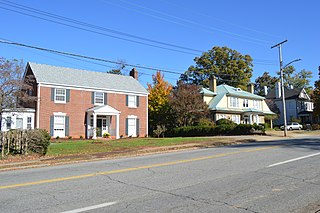
East Church Street–Starling Avenue Historic District is a national historic district located at Martinsville, Virginia. It encompasses 117 contributing buildings, 1 contributing structure, and 1 contributing object in a residential section of Martinsville. The buildings range in date from the range in date from the mid-1880s to the mid-1950s and include notable examples of the Tudor Revival and Colonial Revival styles. Notable buildings include the James Cheshire House, the Obidiah Allen House, John W. Carter House (1896), Christ Episcopal Church (1890s), G.T. Lester House or the “Wedding Cake House” (1918), John W. Townes House, Vaughn M. Draper House, and Martinsville High School (1940) and Gymnasium Building (1928). Located in the district are the separately listed John Waddey Carter House, Scuffle Hill, and the Little Post Office.
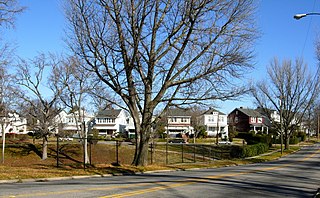
The Battery Court Historic District is a national historic district located at Richmond, Virginia. The district encompasses 549 contributing buildings and 1 contributing site located north of downtown Richmond and west of Barton Heights and Brookland Park. The primarily residential area developed starting in the early-20th century as one of the city's early “streetcar suburbs.” The buildings are in a variety of popular late-19th and early-20th century architectural styles including frame bungalows, American Foursquare, Colonial Revival, Tudor Revival, and Mission Revival. Notable non-residential buildings include the Overbrook Presbyterian Church and Battery Park Christian Church.
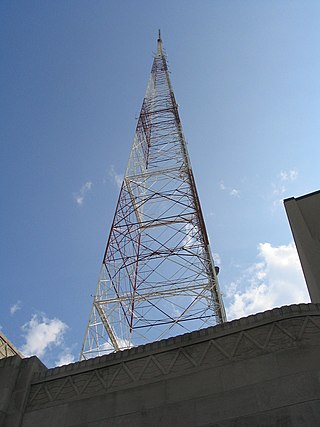
The Scott's Addition Historic District is a national historic district located in Richmond, Virginia.

Beverley Historic District is a national historic district located at Staunton, Virginia. The district encompasses 131 contributing buildings in downtown Staunton. It is a compact commercial district characterized by a well-preserved collection of 19th-century buildings. The buildings are characteristically two- to four-story, brick structures in a variety of popular architectural styles including Romanesque Revival and primarily Italianate. Notable buildings include the old YMCA (1890), Hoover House Hotel (1893-1894), Putnam Organ Works Store (1894), City Hall, Odd Fellows Hall, U.S. Post Office (1936), and the Masonic Temple building (1895-1896). Located in the district are the separately listed National Valley Bank and Augusta County Courthouse.
























